Christmas delivery cut-offs are here. International by Dec 8, Regional Aus by Dec 15, Metro Aus by Dec 21. Full Details
Gifts for making memories outside. Shop the Guide
Christmas delivery cut-offs are here. International by Dec 8, Regional Aus by Dec 15, Metro Aus by Dec 21. Full Details
Gifts for making memories outside. Shop the Guide
A pilgrimage for many, the Old Telegraph Track – affectionately known as the ‘Tele’ – is easily one of the most iconic tracks in Australia. If you’re a seasoned camper, you’ll no doubt have heard tales of its infamy regaled around the fire. Up there with the likes of Gibb River Road, the Canning Stock Route and the French Line, it’s not surprising that it too has its roots in Australia’s early colonial pioneering history.
As its namesake suggests, the Tele Track was originally used to maintain the telegraph line that was vital for communications within the Cape. Formerly known as the Cape York Overland Telegraph Line, it featured German-made galvanised cast iron poles, and was operational for over 100 years before it was retired from service in 1987. It’s hard to imagine what a task this would have been; carting the heavy poles from the northern ports and installing them across the 200+ kilometres of the Tele Track. Not to mention the hundreds of kilometres beyond that, right down the middle of the peninsula. Even more incredible is that many of the poles still stand alongside the track today.
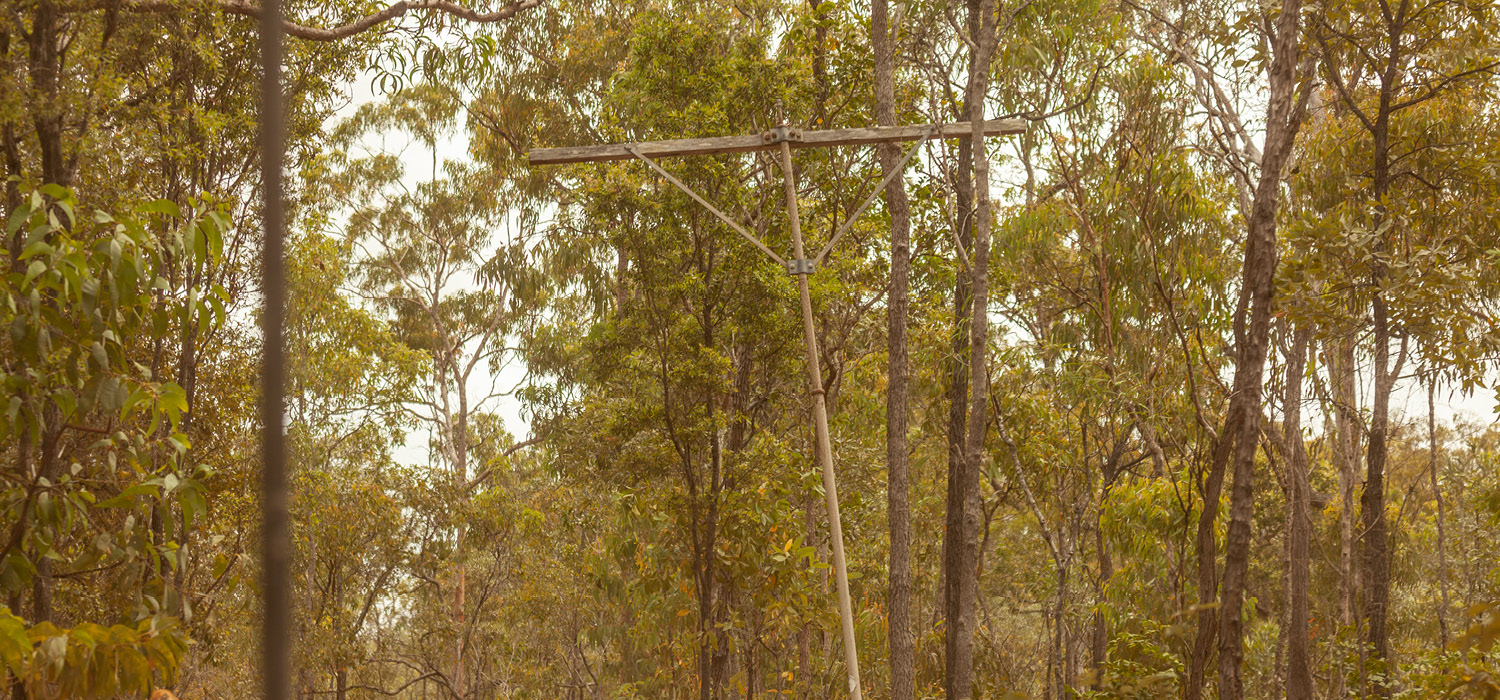
It has a reputation for being a moderate track; it’s not too bad in a capable 4x4 with a seasoned driver behind the wheel. There are definitely more difficult trips out there, but for the average 4-wheel-driver, it’s great fun and presents a good challenge. And as with most tracks, the level of complexity, and the adventure, can vary wildly depending on the conditions.
So, what’s it’s like on the Tele? Well, before you even get started, we recommend you spend the night before at Bramwell Station. It’s well-positioned, just a few minutes down the PDR from where the OTT begins. And there's nothing like starting the Tele right: buzzing from a cracking night of good old country hospitality. After all, what's better than hearty food, a wonderful atmosphere and brilliant entertainment? The team at Bramwell Station do a wonderful job, and we can't recommend spending a night (and opting for the buffet!) enough.
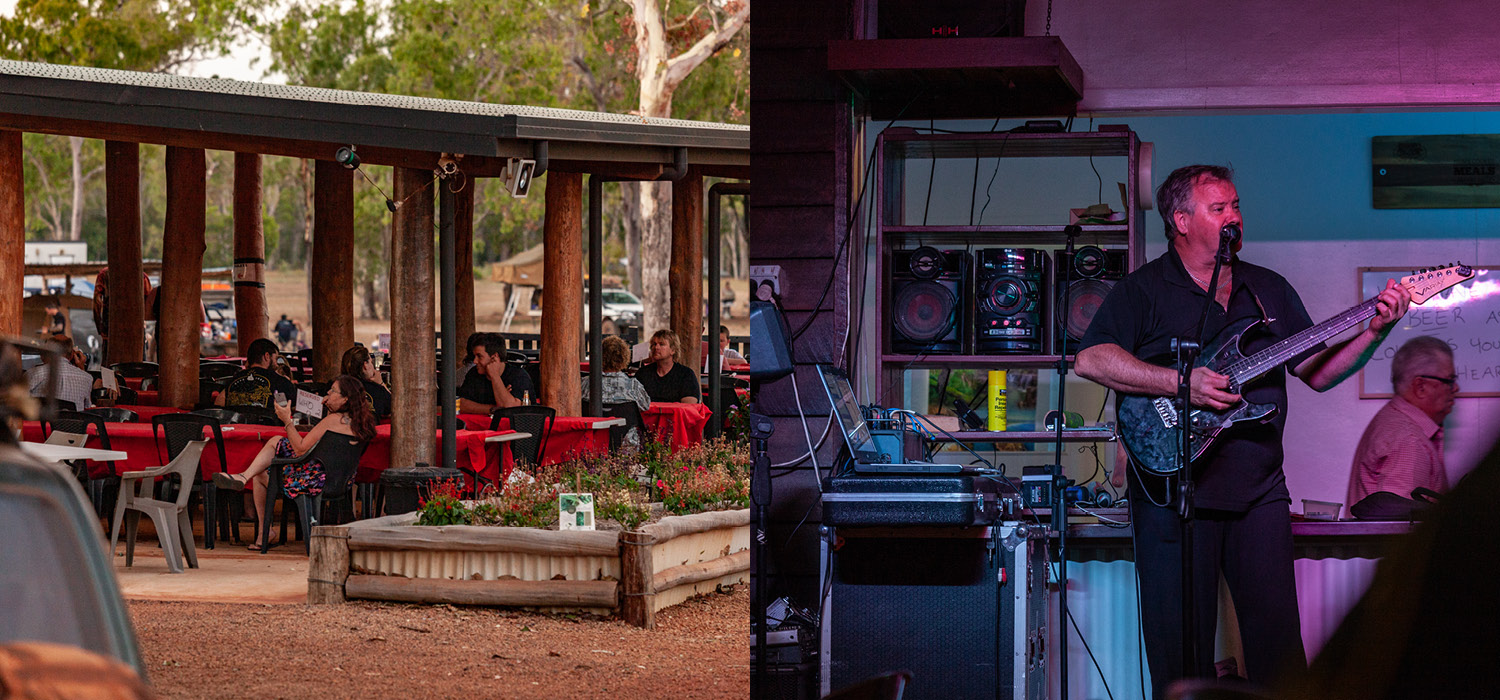
Departing the station, there’s a few more kilometres of the Peninsula Development Road left, and you'll have the chance to fill up one last time at Bramwell Junction Roadhouse. After many days of bone-rattling corrugations, most are more than happy to say goodbye to the PDR. If you do refuel here, it can be hard to contain your excitement, as the famous sign that marks the entrance to the OTT sits merely metres away from the bowsers.
Entering the Tele Track can feel a little like when you arrive at the airport at a strange destination, and you’re practically buzzing to get through customs and out into the city beyond. The track starts quite flat, and there's a sense of anticipation. No matter how much you've read or watched, the track conditions change after every wet season, and you really have no idea what's in store. But one thing is for sure: it's going to be epic.
The Tele doesn't keep you waiting long before showing its true colours. Palm Creek is first up, and whilst we could describe it for you, chances are it's changed since, as each wet season carves it’s banks differently. Some drive it with ease, and others with lower clearance can struggle a little more. Ultimately though, everyone bands together regardless of their convoy, and no man is left behind. Often this first crossing can even act as a bit of a meet and greet. Many folks do the track at around the same pace, and you'll likely encounter the same few groups over the next week as they make their way up the Tele and explore the Tip.
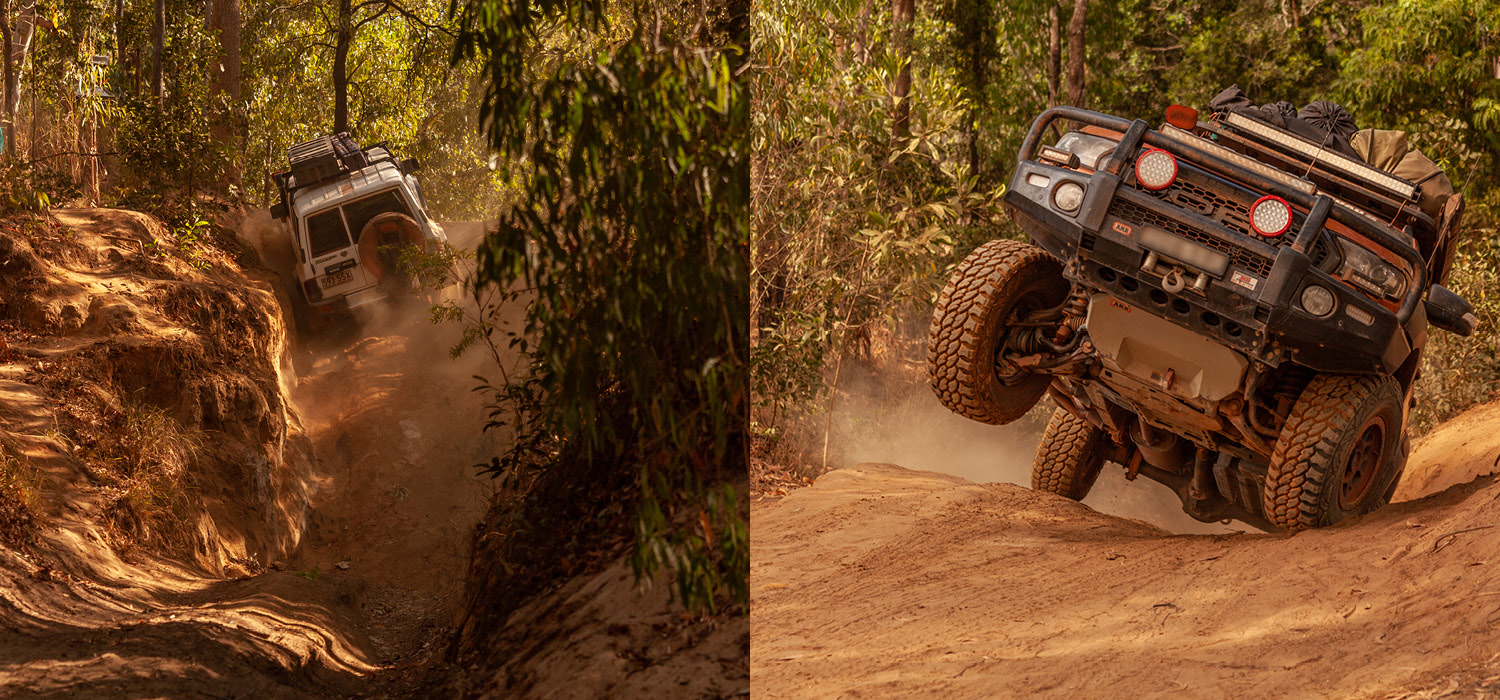
After Palm, the creeks come in quick succession: Dulcie, South Alice, North Alice and Dulhunty. The water levels can depend on how late you are in the season, but these are traditionally simpler crossings. Regardless of their levels, they're all a bit of fun and just downright beautiful. If you keep your eyes peeled, it's around this point that you should start to spot more of the track’s namesake poles too.
Eventually, you'll reach the infamous Gunshot Creek. As the years have gone by several entries to Gunshot have appeared, meaning it can take a moment to figure out which is 'the original'. With at least two at around the 90-degree mark, it's quite a spectacle. If you’re feeling up to it, it’s worth a crack. But even if you decide to opt for another entry, it's entertaining to sit and watch as punters take on the tougher lines. As if the entry wasn't enough, the exit offers a show too; with deep ruts, sharp turns and a soft sandy base. And as with all tracks, it never looks as tough in the pictures.
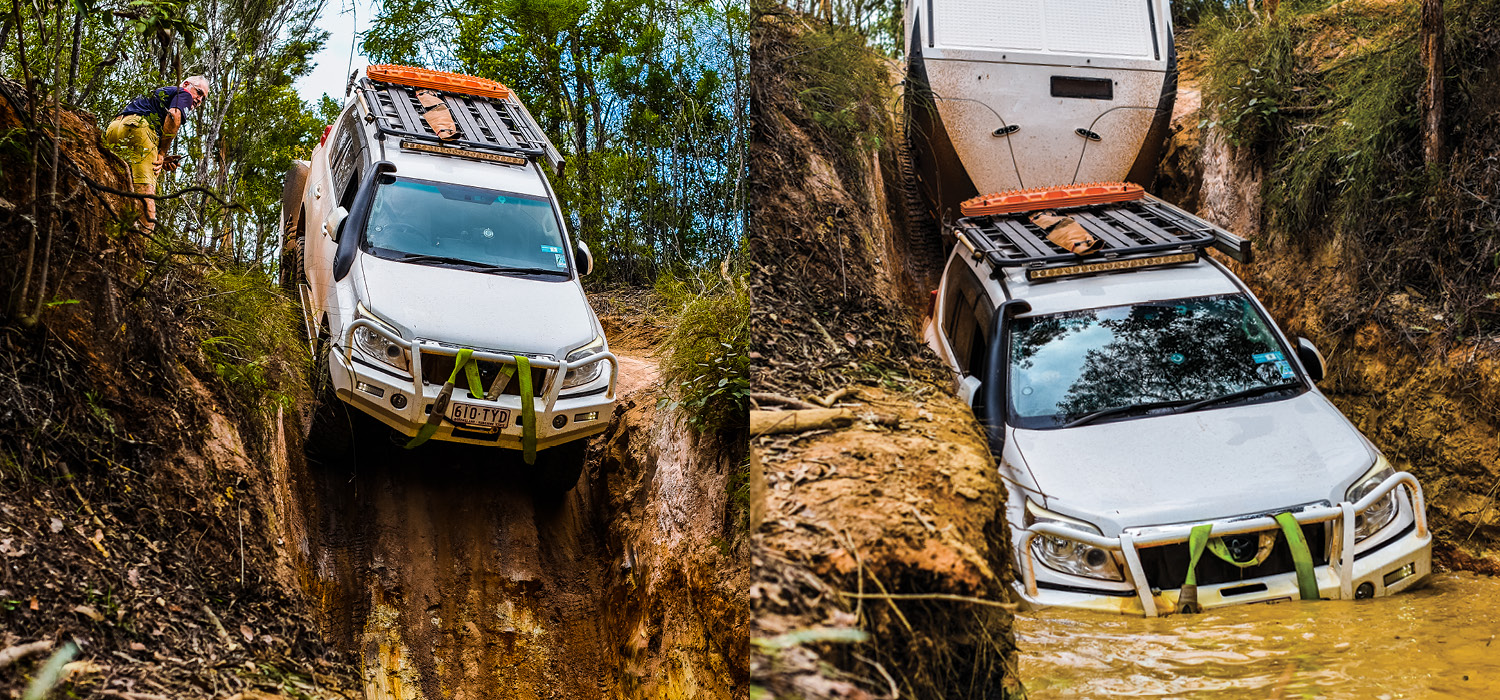
Once you've had your fill of watching others drive Gunshot, the track continues north. First crossing the picturesque Cockatoo Creek with its liquid amber water and huge boulders; and then Sailor Creek, with its dodgy old timber bridge – which is definitely a couple of planks short.
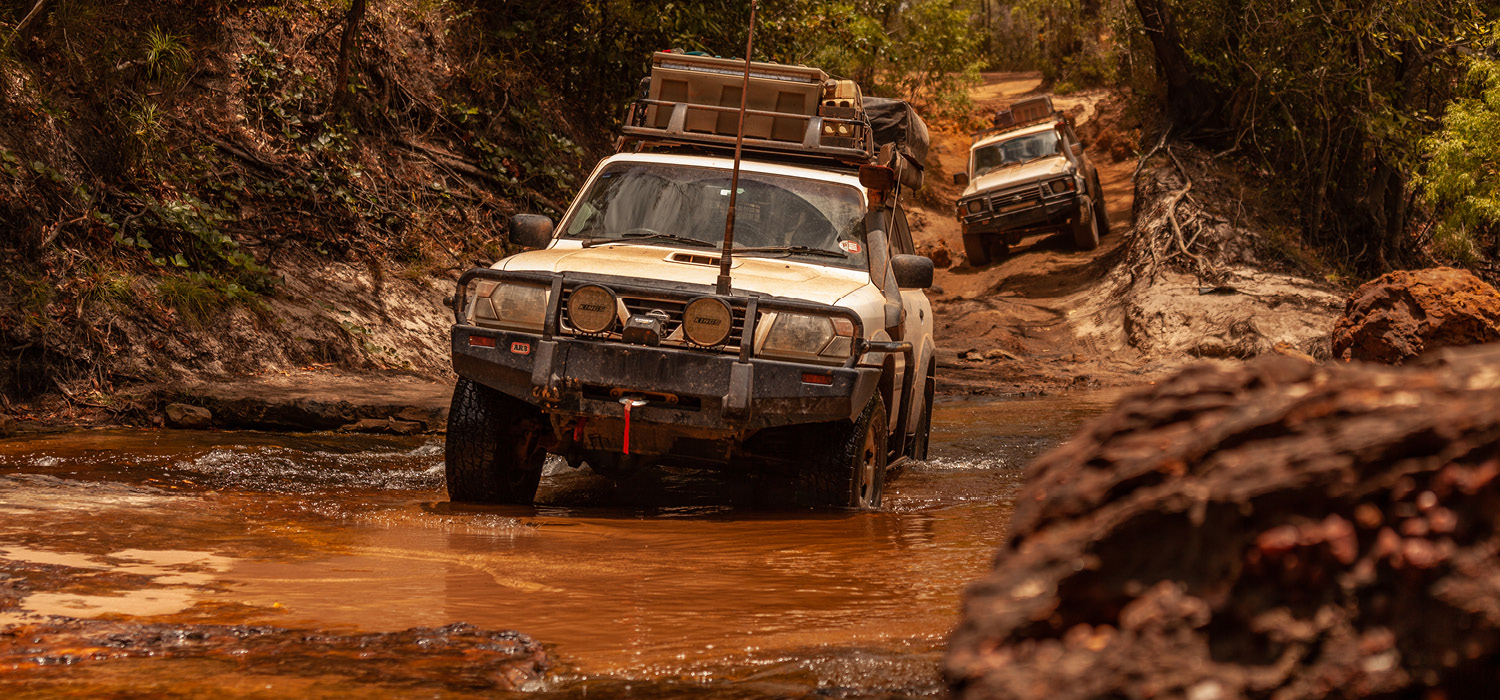
It's at this point you'll reach Fruit Bat Falls, and it doesn’t disappoint. Cool, green-hued pools of water tumbling over warm toffee rocks, waterfalls strong enough to relieve aching muscles after days on rough roads... Of all the places we've had the pleasure of visiting in our travels, this perhaps is the most deserving of the “oasis in the desert” title. It's worth spending a few hours luxuriating in its temperate waters; drinks in hand; splashing, chatting and just generally enjoying your beautiful surroundings. This is what the Cape is all about.
Of all the sites along the Tele, many visitors opt to stay either in the QPWS-managed Eliot Falls Campground, or nearby Canal Creek. Eliot will grant you walking-distance access to Eliot and Twin Falls, as well as the lesser-known but equally beautiful Saucepan Falls. For the adventurous, Canal has some more secluded falls hidden along its waters – just make sure to be croc safe. Either way, it's a perfect way to conclude a day on the Tele; pruney and content after a day filled with epic driving and pristine swimming.
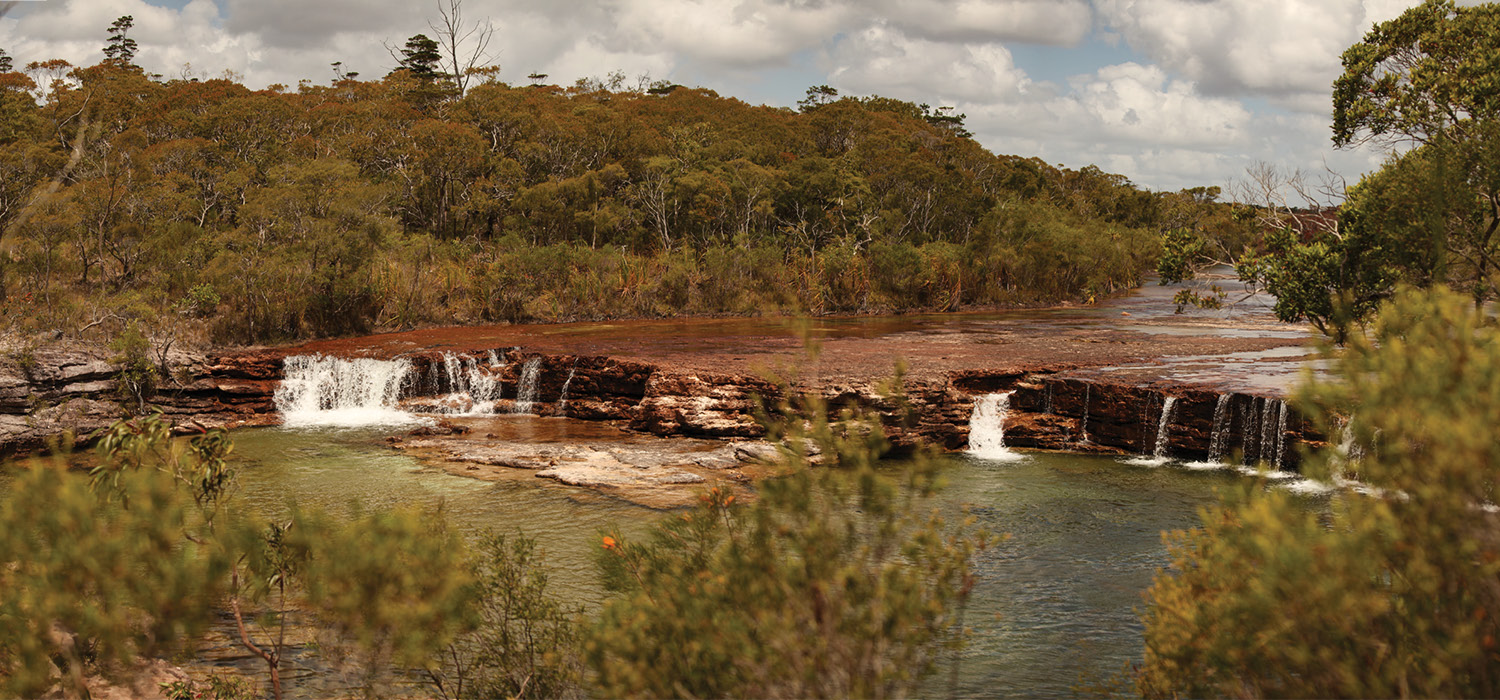
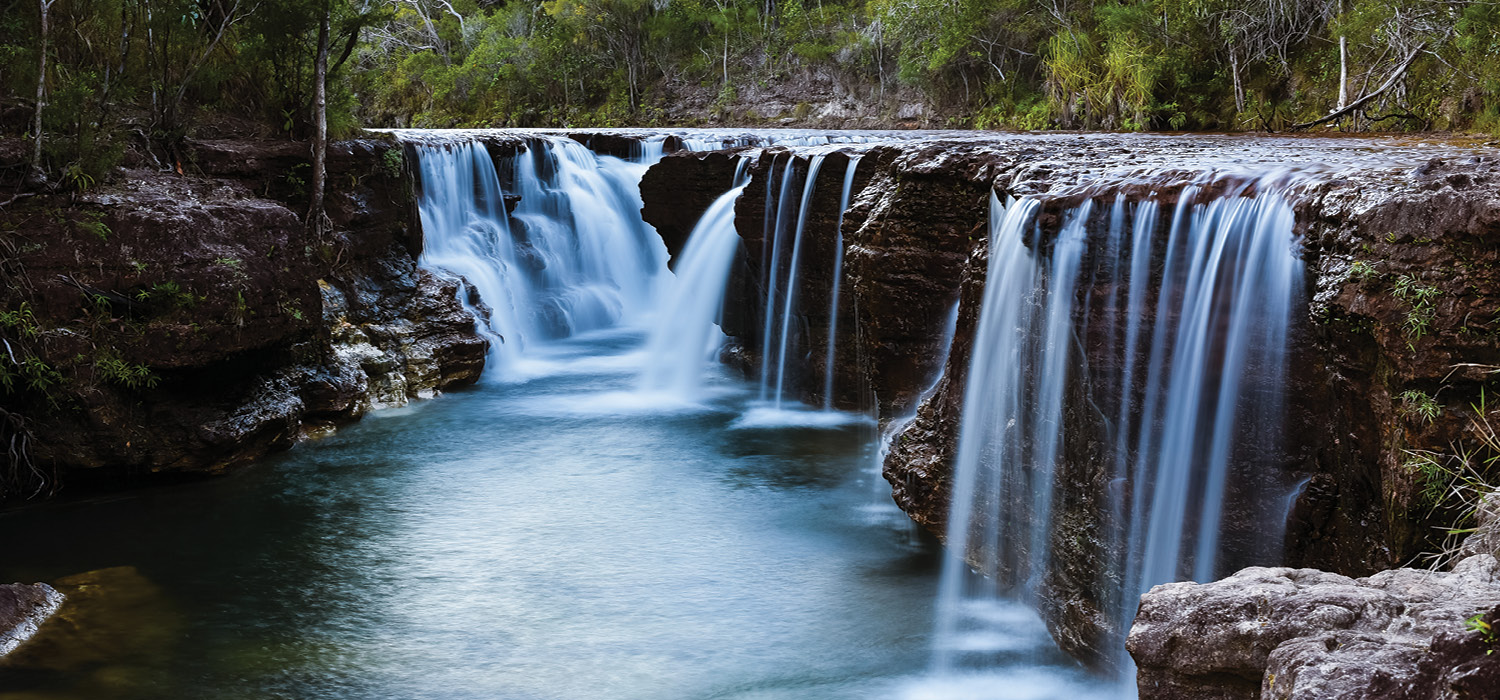
Continuing north from Canal Creek, you'll cross the innocent-sounding Sam Creek, as well as the more alarmingly-named Mistake and Cannibal creeks. These crossings alone hold a fair few obstacles. Add the improvised log bridge at Cypress, the very-deep Logans Creek... well, it’s safe to say the top half doesn’t go easy on you. But boy, is it fun.
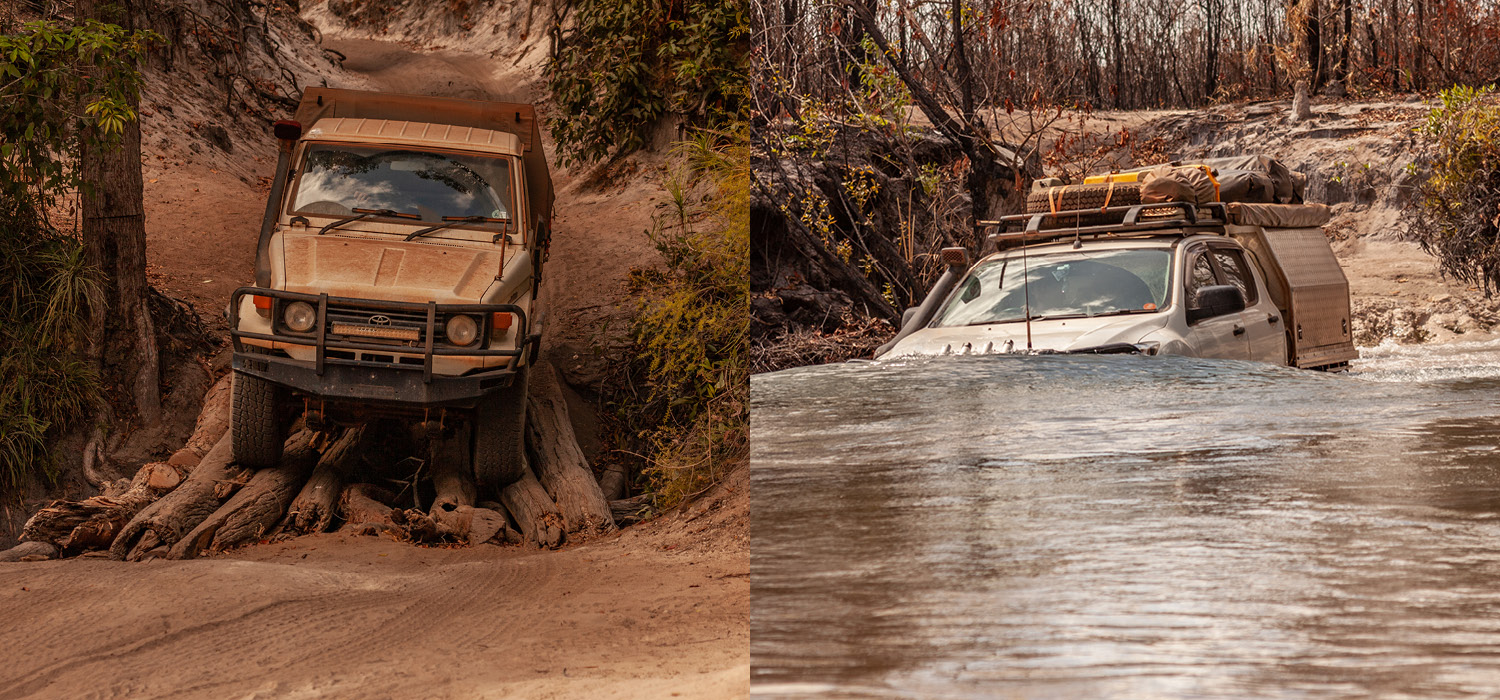
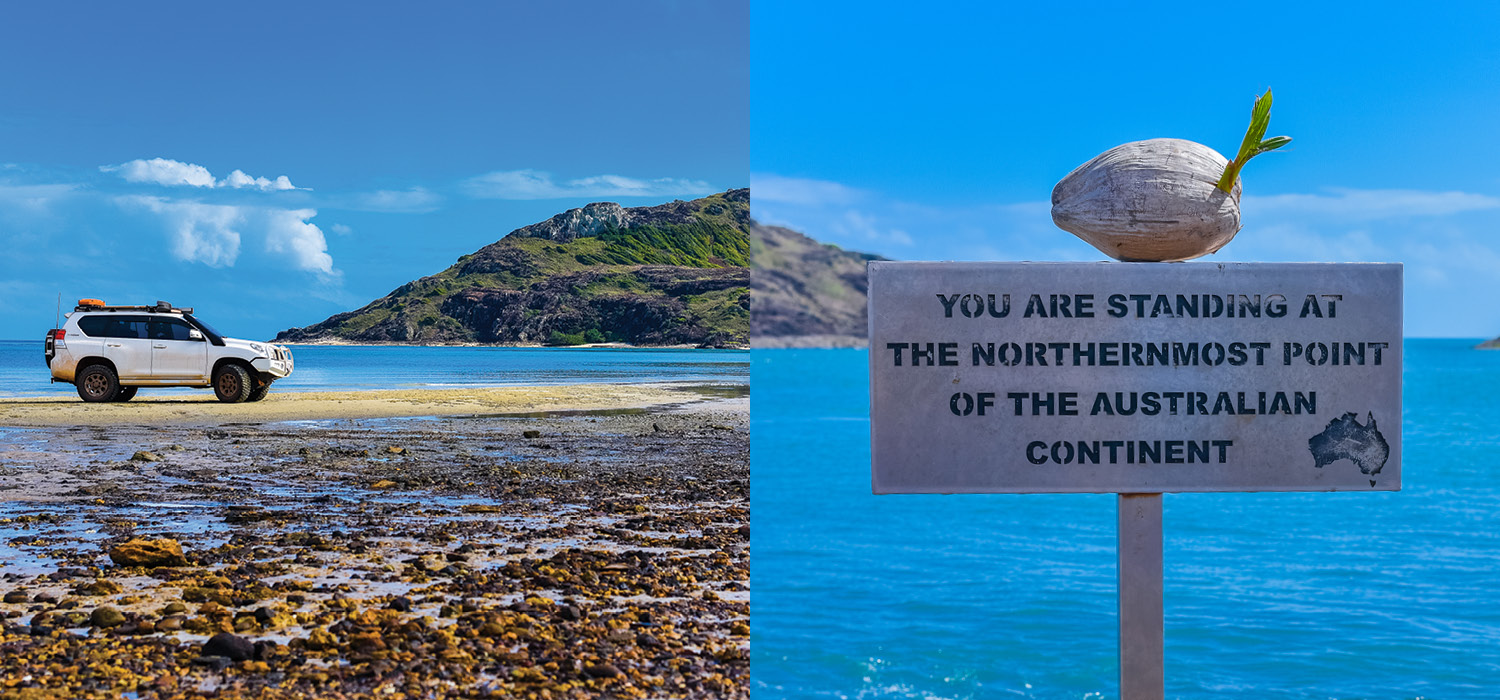
For most folks, the notorious sandy-bottomed Nolans Brook marks the last true obstacle on the OTT. Much like Gunshot, it's also a great place to park up after you've made it across. Sit and watch others have a go, or even join the fun and help hitch straps for those who inevitably get stuck.
After you complete the track, it feels a bit odd to emerge, once again at the road to the tip. We like to think that's because the Tele changes you: the person who left the dusty corrugations is not the same one who's re-joining them now. It's probably why every season so many people head back, hungry for more.
Most folks will continue the trek north; crossing the Jardine and heading all the way to the Tip, Pajinka. Climbing out over the rocks towards the famous sign at the Tip, it's a good chance to reflect on the journey. You've tackled the OTT, and likely some other famous places along with it – maybe the Frenchman's, Chilli Beach, Rinyirru, Old Coach Road or even the CREB. It can even feel a little bittersweet after days and weeks spent venturing here.
But as the saying goes, climbing down the mountain is still climbing the mountain.
The adventure home is just beginning.

We test our range in the places you want to go, so whether your next adventure is the High Country, the Simpson or the Cape – you have the confidence of knowing our products have tackled tough journeys before.
The gear our team recommends for tackling the Old Telegraph Track:
Under Vehicle Protection – for those who like to tackle tougher lines
Recovery Points – sturdy and secure points are always a worthwhile investment
A Light Cargo Barrier – to keep everything in the back where it belongs
Tables – for those trackside lunches, or a bar for a couple of cheeky sundowners
Water Tank – because there's nothing like washing off the dust of the cape after a long day
Found yourself off-track? Our team is on hand to help you get unstuck.